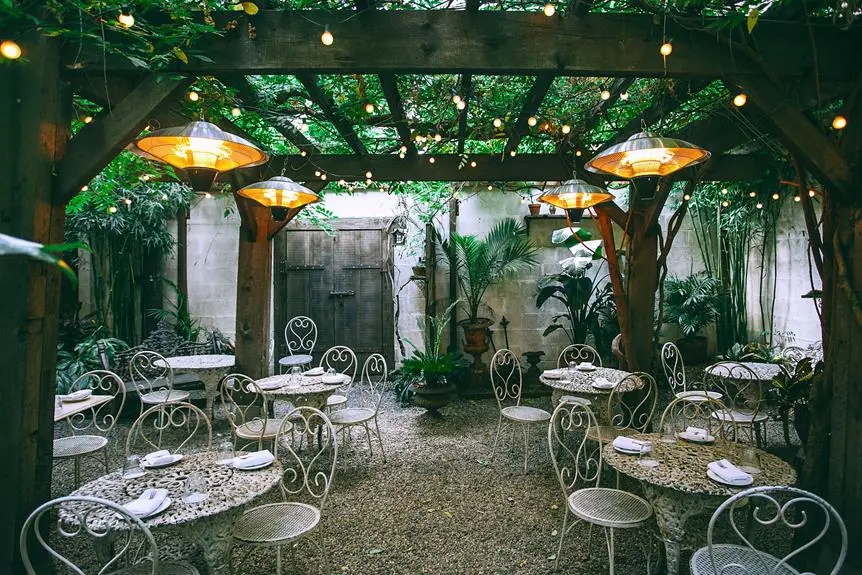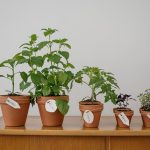Looking to give your plants the best growing environment? Choosing the right fabric pots is like finding the perfect pair of shoes for your feet. The right fit and material can make all the difference in promoting healthy root development and maximizing plant growth.
In this guide, you'll explore the benefits of fabric pots, different options available, and how to select the right size for your plants. Understanding drainage and aeration, as well as comparing fabric materials, will help you make an informed decision.
Whether you're tending to indoor or outdoor plants, mastering the use of fabric pots will elevate your gardening game.
Key Takeaways
- Fabric pots promote healthy root development through air pruning and the stimulation of new roots.
- They offer excellent water retention and drainage, preventing waterlogged soil and root rot.
- Fabric pots maintain optimal growing conditions for plants by promoting air circulation and ensuring an adequate supply of oxygen to the roots.
- When choosing fabric pots, consider the appropriate size for your plants, the presence of sufficient drainage holes, and the durability and breathability of the materials.
Benefits of Fabric Pots
You'll appreciate the benefits of fabric pots for your plants. When it comes to plant health and root development, fabric pots offer significant advantages.
Unlike traditional plastic pots, fabric pots allow for air pruning, which prevents the roots from becoming root-bound and encourages the growth of a healthy root system. This air pruning stimulates the development of new roots, creating a denser and more fibrous root structure, ultimately leading to healthier and more vigorous plants.
Moreover, fabric pots excel in water retention and air circulation. The porous nature of the fabric allows excess water to drain, preventing waterlogged soil and the associated problems of root rot and fungal issues. Simultaneously, the fabric promotes air circulation, ensuring that the roots receive an adequate supply of oxygen. This balance of water retention and air circulation is crucial for maintaining optimal growing conditions for your plants.
Different Fabric Pot Options
When choosing fabric pots for your plants, consider the size and drainage options available, as well as the durability and lifespan of the materials.
You'll also want to explore the benefits of air pruning for your plants' roots.
These factors will help you select the best fabric pot option for your specific gardening needs.
Size and Drainage Options
After you have determined the specific needs of your plants, it's important to select the appropriate size and drainage options for your fabric pots.
When it comes to choosing the right size and proper aeration techniques for your fabric pots, consider the following options:
- Size Options: Select the fabric pot size based on the specific requirements of your plants, ensuring enough space for healthy root development.
- Drainage Holes: Opt for fabric pots with sufficient drainage holes to prevent waterlogging and promote proper aeration.
- Raised Bottom: Choose fabric pots with a raised or elevated bottom to enhance drainage and prevent water accumulation.
- Breathable Material: Look for fabric pots made from breathable materials that facilitate air pruning and root development.
Considering these size and drainage options will ensure that your plants thrive in the fabric pots.
Material Durability and Lifespan
To ensure the longevity of your fabric pots, it's essential to explore different options and their material durability, which will directly impact the lifespan of your containers. When considering fabric pot construction, it's crucial to weigh the pros and cons of various materials. The table below provides an overview of different fabric pot options and their durability, helping you make an informed decision that promotes plant root health.
| Fabric Pot Material | Durability |
|---|---|
| Fabric | Moderate |
| Polyethylene | High |
| Recycled PET | High |
| Felt | Low |
| Nylon | High |
Understanding the material durability of fabric pots is integral to ensuring the long-term health and stability of your plants. By selecting a durable fabric pot, you can provide a conducive environment for your plants to thrive while minimizing the risk of premature deterioration.
Benefits of Air Pruning
How effectively can fabric pot options promote air pruning to enhance root health and plant growth?
Fabric pots facilitate air pruning, which encourages robust root development and overall plant health. The benefits of air pruning in different fabric pot options include:
- Enhanced plant health due to improved air circulation around the roots.
- Stimulated root development, resulting in a healthier and more extensive root system.
- Better water retention, preventing waterlogging and promoting optimal moisture levels for the roots.
- Increased nutrient uptake, leading to improved overall plant growth and vitality.
Choosing the right fabric pot can significantly impact the air pruning process, ultimately contributing to the overall well-being and productivity of your plants.
Choosing the Right Size
Select the appropriate size fabric pot based on the specific needs of your plants. Choosing the right size is crucial for providing adequate space for your plants to grow healthy roots. Consider the mature size of your plants and their growth habits when selecting the fabric pot size. Here's a table to guide you in choosing the right size fabric pot for your plants:
| Plant Type | Recommended Pot Size |
|---|---|
| Small Herbs | 1-3 gallons |
| Vegetables | 3-10 gallons |
| Trees and Shrubs | 10-30 gallons |
When choosing the right size fabric pot, think about the plant's potential size and how much space the roots will need to thrive. Small herbs like basil or mint generally do well in 1-3 gallon pots, while larger vegetables such as tomatoes or peppers may require 3-10 gallon pots. Trees and shrubs need even larger containers, typically ranging from 10-30 gallons, to accommodate their extensive root systems. By considering plant growth considerations and choosing the right size fabric pot, you can provide an optimal environment for your plants to flourish.
Understanding Drainage and Aeration
When growing plants in fabric pots, ensure proper drainage and aeration by placing the pots on elevated surfaces to allow for sufficient air circulation underneath. This is crucial for maintaining the health of your plants as it facilitates water drainage and air exchange, which are essential for optimal root development and water retention.
Here are some key points to consider when understanding drainage and aeration:
- Elevated Placement: Elevating fabric pots promotes air circulation and prevents waterlogging, which can impede root growth.
- Quality Soil Mix: Use a well-draining soil mix to prevent water from pooling at the bottom of the fabric pot.
- Regular Inspection: Check the drainage holes to ensure they aren't blocked, allowing excess water to escape freely.
- Mulching: Applying a layer of mulch on top of the soil can help regulate moisture levels and improve aeration.
Fabric Pot Material Comparison
When choosing fabric pots for your plants, it's important to consider the differences in breathability between materials.
The durability of fabric pots can also vary, impacting their longevity and ability to support your plants.
Additionally, the material of the fabric pot can affect water drainage, which is crucial for maintaining proper moisture levels for your plants.
Fabric Pot Breathability Differences
You can compare the breathability of different fabric pot materials to determine the best option for your plants' needs. When evaluating fabric pot breathability, consider the following factors:
- Material Composition: Look for fabric pots made from breathable materials like porous felt or breathable fabric blends.
- Air Circulation: Choose fabric pots with good air circulation to prevent moisture buildup and promote healthy root development.
- Moisture Retention: Opt for fabric pots that maintain adequate moisture levels without leading to waterlogged soil.
- Insulation Properties: Consider the insulation properties of the fabric pot material to ensure a consistent root zone temperature.
Durability of Fabric Pots
To assess the durability of fabric pots, consider the comparative longevity of various fabric materials used in their construction. When evaluating fabric pot options, it's crucial to understand the material's ability to withstand outdoor conditions, resist tearing, and maintain structural integrity. Below is a comparison of common fabric materials used in fabric pot construction:
| Fabric Material | Durability | Breathability |
|---|---|---|
| Fabric A | High | Good |
| Fabric B | Medium | Excellent |
| Fabric C | Low | Moderate |
Understanding the durability of fabric pots is essential in maximizing the benefits they offer for your plants. By comparing different fabric materials, you can make an informed decision when choosing plant container options.
Water Drainage in Fabric
Assessing the water drainage in fabric pots involves comparing the ability of different fabric materials to regulate moisture levels and support healthy root growth. When selecting fabric pots for your plants, it's crucial to consider the water drainage capabilities to ensure optimal growing conditions.
Here's what to look for when evaluating fabric pot materials:
- Improved Aeration: Choose fabric pots that promote better airflow to the roots, preventing waterlogging and enhancing oxygen circulation.
- Preventing Root Rot: Opt for fabric materials that facilitate proper drainage, reducing the risk of root rot and other moisture-related issues.
- Moisture Regulation: Look for fabric pots that effectively manage moisture, preventing water from stagnating and causing harm to the roots.
- Healthy Root Growth: Select fabric materials that support robust root development by maintaining an optimal balance of moisture and air in the soil.
Best Fabric Pots for Indoor Plants
Looking for the best fabric pots for indoor plants? When it comes to indoor gardening, choosing the right plant container is crucial for the well-being and growth of your plants. Fabric pots have gained popularity among indoor gardeners due to their excellent soil drainage, which is essential for plant growth optimization. These pots are made from breathable fabric materials that prevent overwatering and root circling, promoting healthier root systems and overall plant growth. Here are some of the best fabric pots for indoor plants:
| Fabric Pot Brand | Size | Features |
|---|---|---|
| Smart Pots | 5 Gallon | Aeration, durable, promotes root pruning |
| VIVOSUN | 3 Gallon | Thick fabric, handles for easy moving |
| Bootstrap Farmer | 10 Gallon | UV resistant, multiple color options |
These fabric pot options provide excellent potting materials for a variety of indoor plants. The benefits of fabric pots make them a preferred choice for indoor gardening enthusiasts looking to provide the best environment for their plants' growth.
Maintenance and Cleaning Tips
Maintaining and cleaning fabric pots is essential for ensuring the continued health and vitality of your indoor plants. To keep your fabric pots in top condition, here are some cleaning tips and storage techniques to prevent mold and mildew:
- Regular Cleaning: Periodically clean fabric pots with a mild soap and water solution to remove any accumulated salts, minerals, or residues. Ensure that the pots are completely dry before reusing them.
- Proper Storage: When not in use, make sure to store fabric pots in a dry and well-ventilated area. Avoid stacking them when they're damp to prevent the growth of mold and mildew.
- Sunlight Exposure: Expose the fabric pots to sunlight after cleaning to prevent the development of mold and mildew. Sunlight helps to kill any remaining spores and keeps the fabric pots dry.
- Avoid Overwatering: Overwatering can contribute to the development of mold and mildew. Ensure proper drainage and avoid letting excess water sit in the fabric pots.
Frequently Asked Questions
Can Fabric Pots Be Used for Hydroponic Gardening?
Yes, fabric pots can be used for hydroponic gardening. They offer better aeration and root structure compared to plastic pots. However, they require more frequent watering and may not be suitable for all hydroponic systems.
Are There Any Fabric Pots Specifically Designed for Hanging Plants?
Looking for fabric pots designed for hanging plants? Check out options with reinforced handles for durability. They offer aesthetic appeal and save space, making them ideal for your hanging garden.
What Are the Best Fabric Pots for Outdoor Use in Extreme Weather Conditions?
When choosing fabric pots for outdoor use in extreme weather conditions, consider durability and insulation. Look for pots made with strong, weather-resistant fabric that provides insulation to protect your plants from temperature fluctuations and harsh elements.
Do Fabric Pots Come With Handles for Easy Transportation?
Yes, fabric pots come with handles for easy transportation. They are designed for durability and excellent drainage. Handles make it convenient to move your plants around, ensuring they receive the best care.
Can Fabric Pots Be Reused for Multiple Growing Seasons?
Yes, fabric pots can be reused for multiple growing seasons. Their durability makes them suitable for long-term use, reducing the environmental impact of single-use containers. You'll appreciate their eco-friendly and cost-effective benefits.
- Tetron Fabric for Marine Applications: Durability and Use Cases - June 18, 2025
- Tetron Fabric for Outdoor Furniture: Weather Resistance and Care - June 18, 2025
- Tetron Fabric for Wall Coverings: Style and Application Tips - June 18, 2025







